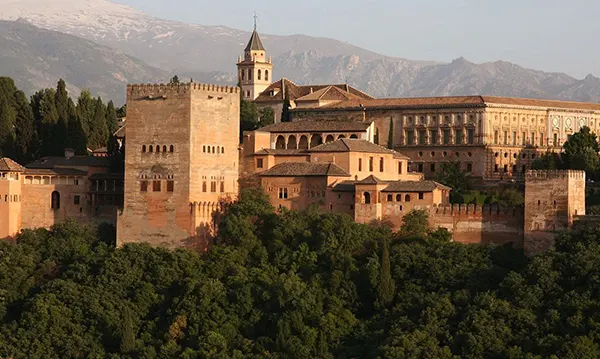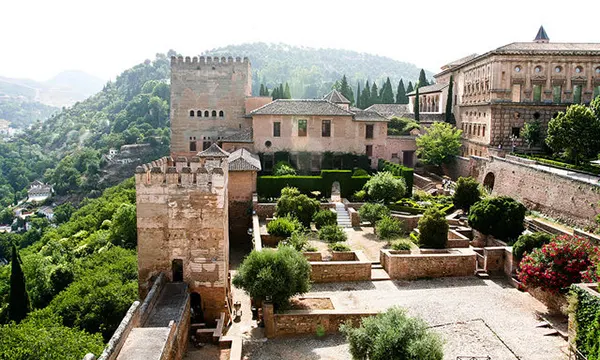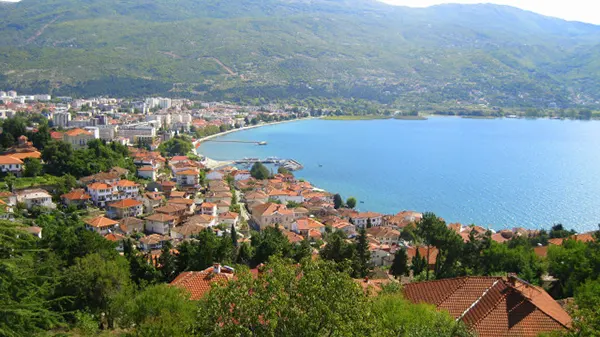
Alhambra (Spain): Moorish Palace in the Heart of Granada
The Alhambra, located in Granada, Spain, stands as one of the most iconic monuments of Islamic architecture in Europe. Dating back to the Nasrid dynasty, this complex is a fusion of palatial structures, fortified towers, serene courtyards and lush gardens. It represents a unique blend of Islamic artistry and later Christian influences, preserved through centuries of historical shifts.
The Historical Journey of the Alhambra
Construction of the Alhambra began in the mid-13th century under Mohammed I, founder of the Nasrid dynasty. Initially, it served as a fortress, later expanding into a royal residence with intricate palaces and administrative quarters. Each successive ruler contributed to its transformation, creating an architectural masterpiece that showcased power and sophistication.
Following the Reconquista in 1492, the Alhambra became part of Christian Spain. Queen Isabella and King Ferdinand claimed the palace as a symbol of victory. Despite alterations introduced during the Renaissance, including some Christian iconography and buildings, many original Moorish elements remained untouched.
Over centuries, the Alhambra experienced periods of neglect and decay. It wasn’t until the 19th century, during the Romantic movement, that European intellectuals and travellers reignited interest in its beauty and historical value. Restoration efforts began, many of which continue today under strict preservation regulations.
Architectural Features and Islamic Legacy
What makes the Alhambra exceptional is its highly detailed Islamic art and architecture. Arabesques, calligraphy, muqarnas (stalactite-like decorations), and geometric patterns dominate the interiors. The use of symmetry and water elements throughout the complex reflects Islamic concepts of paradise and order.
The Court of the Lions is perhaps its most celebrated example. This courtyard features a marble fountain supported by twelve sculpted lions, encircled by delicate columns and intricate stucco work. Such features exemplify the Nasrid taste for elegance combined with spiritual symbolism.
Islamic inscriptions throughout the complex celebrate poetry, divine unity, and royal power. Most are written in classical Arabic and embedded into tiles and stucco. These inscriptions function not only as ornamentation but also as a testimony to the cultural and religious ethos of the time.
The Palaces and Gardens of the Alhambra
The complex comprises several key sections: the Alcazaba (military fortress), the Nasrid Palaces, the Generalife gardens, and Charles V’s Renaissance palace. Each section reveals a different historical layer and purpose within the compound. Visitors often begin with the Alcazaba for its panoramic views and defensive structure.
The Nasrid Palaces are the heart of the Alhambra. These include the Mexuar, the Comares Palace and the Palace of the Lions. The palaces served both as residences and spaces for political affairs. Notably, the Hall of the Ambassadors, with its cedar-wood dome, stands as a ceremonial highlight.
Generalife, meaning “Garden of the Architect,” was the summer residence of the Nasrid emirs. The area features a more rural style, with tranquil courtyards, shaded pathways, and flowing water channels. It represents the Islamic ideal of harmony between architecture and nature.
Preservation and Visitor Experience
Today, the Alhambra is one of Spain’s most visited cultural landmarks. Managing millions of visitors annually requires strict controls to minimise impact on the site. The number of daily tickets is limited, and guided tours are recommended for a structured experience with minimal disruption to the monument.
Restoration is ongoing and led by archaeologists, architects, and artisans. Advanced conservation techniques include laser cleaning of surfaces, digital mapping of architectural damage, and controlled climate monitoring. These ensure that the Alhambra’s features are preserved for future generations without compromising authenticity.
The site is part of UNESCO’s World Heritage List since 1984. Educational outreach programmes, research grants and publications aim to deepen public understanding of the Alhambra’s value beyond its visual appeal. This collective effort ensures its role as a cultural and historical reference point.

Cultural Significance and Modern Impact
The Alhambra’s legacy goes far beyond architectural brilliance. It serves as a symbol of the convivencia (coexistence) between Muslim, Jewish, and Christian communities in medieval Spain. While such harmony was not always perfect, the architectural heritage reflects a shared past of exchange and mutual influence.
In literature and music, the Alhambra has inspired artists for centuries. Writers such as Washington Irving popularised its legend in the 19th century. Composers like Manuel de Falla embedded its atmosphere into their musical compositions, ensuring its presence in modern cultural consciousness.
Today, the Alhambra is not only a historical treasure but also a political symbol. It reminds modern Spain—and Europe more broadly—of the layered identities that shaped its territories. Educational institutions frequently use the site as a case study in cross-cultural history and conservation ethics.
Access and Practical Information for 2025
Visitors in 2025 are advised to book tickets several weeks in advance via the official website. Entry includes timed admission slots to the Nasrid Palaces, Generalife, and Alcazaba. Passport identification is required upon entry, and each ticket is personal and non-transferable.
Granada is accessible by train, bus, or domestic flight, with connections from major Spanish cities. Local transport, including buses and taxis, service the Alhambra directly from the city centre. Comfortable walking shoes are recommended due to the uneven terrain and extensive grounds.
Facilities for visitors include a visitor centre, cloakrooms, and a limited number of guided tour operators licensed by the Patronato de la Alhambra y Generalife. QR-code maps and downloadable audio guides are also available to enhance self-guided visits.
Popular articles
-
Outer Islands Seychelles: The Un...
The northern segment of the Outer …

-
Ohrid, North Macedonia — A Timel...
Ohrid is one of the oldest …

-
The biggest and most famous casinos
In recent times, fans of the …

